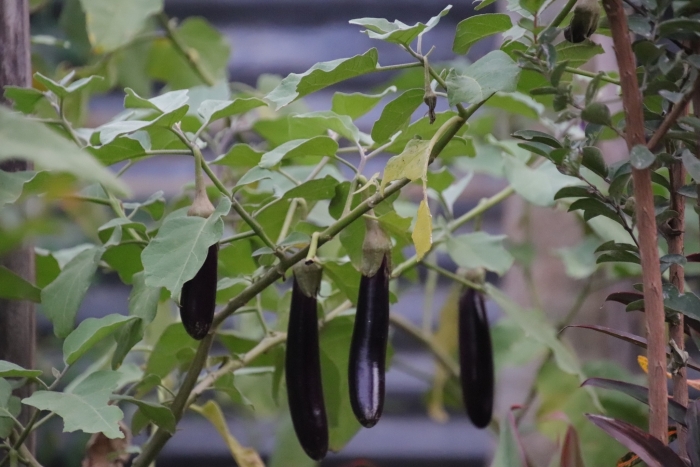Eggplant
(Solanum melongena)
Eggplant (Solanum melongena)
/
/

Casey Clark Sumalinog
CC BY 4.0








































Estimated Native Range
Summary
Eggplants are valued for their edible fruit, which is a staple in cuisines worldwide. They are a key ingredient in dishes such as ratatouille, baba ganoush, and parmigiana. In the garden, they require warm temperatures and are sensitive to frost. Eggplants perform best in full sun with ample water and well-drained soil. Mulching can help retain soil moisture and temperature. Regular feeding and staking may be necessary to support the plant’s vigorous growth and heavy fruit load. While generally easy to grow, eggplants can be susceptible to pests like aphids and spider mites, and diseases such as verticillium wilt. Rotating crops and maintaining good air circulation can help prevent these issues.CC BY-SA 4.0
Plant Description
- Plant Type: Subshrub, Herb
- Height: 2-4 feet
- Width: 1-3 feet
- Growth Rate: Rapid
- Flower Color: N/A
- Flowering Season: Summer
- Leaf Retention: Deciduous
Growth Requirements
- Sun: Full Sun
- Water: High
- Drainage: Fast, Medium
Common Uses
Bee Garden, Edible*Disclaimer: Easyscape's listed plant edibility is for informational use. Always verify the safety and proper identification of any plant before consumption., Potted Plant
Natural Habitat
native to tropical and subtropical Asia, where it thrives in a range of environments from plains to forested areas
Other Names
Common Names: Aubergine, Brinjal, Mad Apple, Raging Apple, Eierfrucht, Berenjena, Béringène, Mélongène, Maranziana, Petrociana
Scientific Names: , Solanum melongena, Solanum indicum, Solanum ovigerum, Solanum trilobatum, Solanum insanum, Solanum esculentum, Solanum melongena subsp. insanum, Solanum melongena var. esculentum, Solanum esculentum var. aculeatum
GBIF Accepted Name: Solanum melongena L.